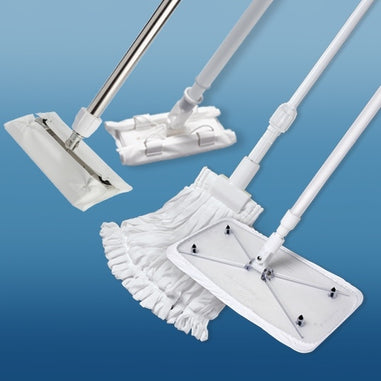- No products in the cart.
The apparel you wear in a cleanroom is one of the most vital components in maintaining the cleanliness of that environment. Manufacturing processes and medical devices can become contaminated due to particles lurking in the environment.
The purpose of a cleanroom is to monitor, control the concentration, and ultimately minimize pollutants like dust, chemical vapors, aerosol particles, and airborne microbes. Cleanrooms often include air filters, air pressure controls, and airlocks to accomplish this goal.
Another way to control the concentration of airborne pollutants is by using cleanroom apparel and equipment. There is apparel that has been cleanroom explicitly approved for this purpose. So, how do you choose what to wear in the different cleanroom scenarios?

Understanding Your Cleanroom Classifications
The International Standards Organization established nine cleanroom classifications. The standards are assigned classifications from ISO 1 to ISO 9. Cleanroom classifications are based on the cleanliness of the room. The classifications are broken down into how much particulate of specific sizes per cubic foot or meter and are then assigned an ISO classification. Classes are then assigned based on the ISO standards. Different industries require different cleanliness and sterility levels.
Particulate concentrations can change over time, starting from the construction and installation of equipment. As instruments and equipment are introduced over time, particulates rise, and when people are added to the mix, particles rise even more. The three cleanroom classification standards include as-built, at-rest, and operational. Cleanrooms must be constantly tested on a routine basis.
ISO Classifications
The most common categories are ISO 3 Class 1, ISO 4 Class 10, ISO 5 Class 100, ISO 6 Class 1,000, ISO 7 Class 10,000, and ISO 8 Class 100,000. Out of all of these classes, ISO 3 Class 1 is the cleanest environment with fewer particles per a specific cubic foot or meter, particles rise even more, and ISO 8 Class 100,000 is the dirtiest with the existence of the most particles per a specific cubic foot or meter.
Table 01: Classifications of Cleanrooms

The above chart can seem a little overwhelming at first glance. To understand how the chart is read, look at ISO 1. An ISO 1 cleanroom must contain no more than 0.35 particles per cubic meter at 0.5 microns and larger.
Personal Protective Equipment Categories
Since cleanroom classifications are based on a cleanliness level, the apparel worn should be material compatible with the allowed shed level of particles. Since ISO 3 Class 1 requires the cleanest environment with fewer particles per specific cubic foot or meter, it will require the most strict standard of apparel. ISO 8 Class 100,000 is the dirtiest environment with more particles per specific cubic foot or meter and requires the least strict standard of apparel.
What Should I Wear In a Cleanroom?
Here is a breakdown of the ISO classifications and classes and the recommended apparel for each.
ISO 3 - Class 1
- Intersuit
- Hood
- Hair cover
- Facial cover
- Gloves
- Coverall
- Boots
ISO 4 - Class 10, ISO 5 - Class 100
- Hood
- Hair cover
- Facial cover
- Gloves
- Coverall
- Boots
ISO 6 - Class 1000, ISO 7 Class 10,000, ISO 8 Class 100,000
- Hood or hair cover
- Facial cover - optional
- Gloves
- Coverall or frock
- Boots or footwear
Frequency of Change - How Often Should a Cleanroom Suit or Garment Be Changed?
Cleanroom suits or garments should be changed based on the classification. For ISO 3, ISO 4, and ISO 5, cleanroom apparel should be changed per entry into the cleanroom. For ISO 6, cleanroom apparel should be changed three times a day. With ISO 7, cleanroom garments should be changed twice a day, and with ISO 8, cleanroom garments should be changed daily.
Other Ways To Control Particle Contamination
Cleanroom apparel is not the only way to control contaminants in the environment. High-Efficiency Particulate Air filters also reduce airborne particles. These are special filters used for trapping particles that are 0.3 microns or larger as the air passes through the filter. Ultra-Low Particulate Air filters are also used for trapping particles.
Where Can I Purchase Cleanroom Apparel?
Lab Pro offers a large variety of cleanroom apparel products. For over 40 years, Lab Pro Inc. has been committed to delivering the highest quality chemicals, tweezers, and hard-wire cutters, lab supplies, and cleanroom PPE apparel to medical device and electronic manufacturing companies and laboratories worldwide. To learn more, visit the biggest Lab Supply showroom in California, or contact us online at 888-452-2776.












































